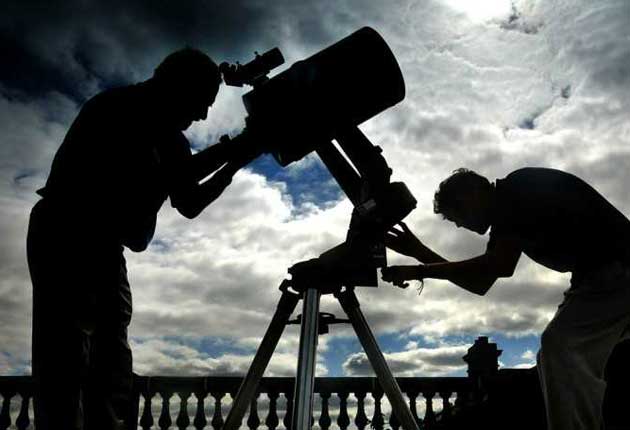17,000 miles sound a long way, but it’s nothing in astronomical terms. And when we’re talking about a rock “large enough to flatten London” zipping past our planet, it is well worth dusting off your binoculars for a better look.
But how best to view asteroid 2012 DA14?
At its peak closeness, DA14 will come within 27,000 km of earth, which works out at about a tenth of the distance between the earth and the moon. Thankfully, as NASA have made clear, there is no chance of the asteroid colliding with our planet.
27,000km is also well within the earth’s satellite zone, although Spaceref.com reported that the asteroid’s path suggests it will come no closer than 1000km to any space object, so again an impact is highly unlikely.
So we know its close, in fact it has broken all records for the closest earth approach by an object of its size, but will it be close enough to view with naked eye?
According to Discovery.com it won’t be. Even at its peak brightness, which will occur at about 7.24pm GMT this evening, the asteroid will only shine at magnitude 7.2, putting it just outside the visibility of the naked eye.
However, with a normal pair of binoculars or an amateur telescope, the asteroid should be perfectly visible zipping across the sky.
The best viewing locations will be in Australia and Asia, where DA14 will pass by shortly before dawn tomorrow morning, but European and African skywatchers will get their best glimpse shortly after 9PM GMT tonight.
Those wanting to see the asteroid from North or South America may struggle a little however, as DA14 reaches its peak brightness in the middle of the day tomorrow.
If you don’t trust your telescope to give you the best view, there are plenty of places the asteroid can be viewed up close online.
Nasa will begin a live video stream later this afternoon, which will come with live commentary from Nasa scientists. The video will be shot by telescopes in Australia and Europe and will last for several hours.
Israel’s Bareket Observatory will also be running images of the asteroid, which will update every 30-60 seconds, while the Virtual Telescope Project will stream live images and commentary from a telescope in Italy.
It’s also well worth checking out Wired.com for their live coverage, as they’ve promised to embed live feeds from several sources.

Join our commenting forum
Join thought-provoking conversations, follow other Independent readers and see their replies
Comments